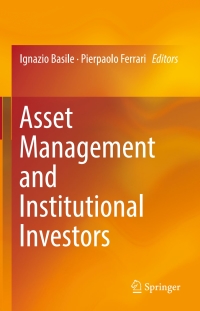Answered step by step
Verified Expert Solution
Question
1 Approved Answer
Laiho Industries December 31 Balance Sheet Assets 2018 2017 Cash and Cash Equivalents $37.66 $10.00 Accounts Receivable $180.00 $150.00 Inventories $180.00 $200.00 Total current assets

| Laiho Industries December 31 Balance Sheet | ||
| Assets | 2018 | 2017 |
| Cash and Cash Equivalents | $37.66 | $10.00 |
| Accounts Receivable | $180.00 | $150.00 |
| Inventories | $180.00 | $200.00 |
| Total current assets | $397.00 | $360.00 |
| Gross fixed assets | $650.00 | $570.00 |
| Less acumulated depreciation | $150.00 | $120.00 |
| Net fixed assets | $500.00 | $450.00 |
| Total assets | $897.00 | $810.00 |
| Liabilities and equity | ||
| Accounts Payable | $108.00 | $90.00 |
| Accruals | $67.00 | $51.50 |
| Notes payable | $72.00 | $60.00 |
| Total current Liabilities | $247.00 | $201.50 |
| Long-Term Debt | $350.00 | $350.00 |
| Total Liabilities | $597.00 | $551.50 |
| Common Stock (50 million shares) | $50.00 | $50.00 |
| Retained Earnings | $250.66 | $208.50 |
| Total common equity | $300.66 | $258.50 |
| Total liabilities and quiety | $897.55 | $810.00 |
| Laiho Industries Income Statement (in millions) | ||
| Sales | $1,200.00 | $1,000.00 |
| Expenses excluding depreciation and amoortization | $1,020.00 | $850.00 |
| EBITDA | $180.00 | $150.00 |
| Depreciation and amortization | $30.00 | $25.00 |
| EBIT | $150.00 | $125.00 |
| Interest expense | $21.70 | $20.20 |
| EBT | $128.30 | $104.80 |
| Taxes (26%) | $25.66 | $20.96 |
| Net Income | $102.64 | $83.84 |
| Common Dividends | $60.48 | $46.38 |
| Addition to retained earnings | $42.16 | $37.46 |
| Statement of Stockholder's Equity (In millions) | ||
| Balance of Retained Earnings, December 31, 2017 | $208.50 | |
| Add: Net income | $102.64 | |
| Less: Common dividends paid | -$60.48 | |
| Balance of retained Earnings, December 31, 2018 | $250.66 | |
| Statement of Cash Flows (in millions) | ||
| Operating Activities | ||
| Net Income | $102.60 | |
| Depreciation and amortization | $30.00 | |
| increase in accounts payabale | $18.00 | |
| increase in accruals | $15.50 | |
| increase in accounts receivable | -$30.00 | |
| increase in inventories | $20.00 | |
| Net cash provided by operating activities | $156.10 | |
| Investing Activities | ||
| Additions to property, plant, and equipment | -$80.00 | |
| Net cash used in investing | -$80.00 | |
| Financing Activities | ||
| Increase in notes payable | $12.00 | |
| Increase in long-term debt | $0.00 | |
| Increase in common stock | $0.00 | |
| Payment of common dividends | -$60.50 | |
| Net cash provided by financing activities | -$48.50 | |
| Summary | ||
| Net increase/decrease in cash | $27.70 | |
| Cash Balance at the beginning of the year | $10.00 | |
| Cash balance at the end of the year | $37.70 |
|
Step by Step Solution
There are 3 Steps involved in it
Step: 1

Get Instant Access to Expert-Tailored Solutions
See step-by-step solutions with expert insights and AI powered tools for academic success
Step: 2

Step: 3

Ace Your Homework with AI
Get the answers you need in no time with our AI-driven, step-by-step assistance
Get Started


